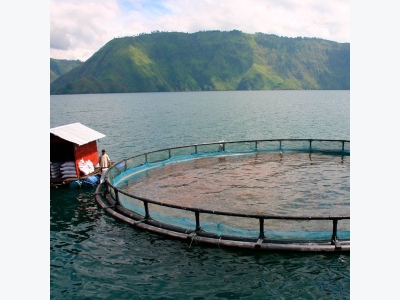6 Easy Ways to Help Save the Environment

The environment needs our help now more than ever. As governments from around the globe ramp up measures to ensure our planet is healthy for generations to come, we need to ask ourselves what we can do as citizens to help as well. Feeling overwhelmed? Don’t know where to start? There are a number of things you can do that are so simple, they’ll seem like second nature. Before you know it, you’ll be living a more eco-friendly lifestyle and the earth will thank you!
Wash Clothes Only When Needed
Laundry probably doesn't top your to-do list anyways, so why not skip it every now and then? For example, simply wipe down your jeans with a cloth if they've only been used for casual wear or spot clean a blouse if there's a small smudge. Reintroduce your old college habits of doing the smell check before putting on clothes when you run out of “clean” ones. Your clothes are normally pretty clean even after a few uses, so use your discretion when deciding what to throw in the hamper
Turn Off the Tap When Brushing
You're brushing our teeth and then you notice the water has been running for two minutes. Chances are you've zoned out—it’s either early in the morning or late at night, so your mind may be wandering. This is no excuse to leave the water running though! Give your brush a quick rinse prior to adding your tooth paste, then twist off those taps. While you may think the water you're wasting is insignificant, many taps flow at a rate of 1.5 gallons per minute. That’s an average of 3 gallons of water every time you brush your teeth!
Take Shorter Showers
Rinse, lather, rinse; 5 minutes is all you need to get this done. By taking quicker showers, you’ll save time and cut down your water usage dramatically. You should also consider updating your fixtures. Old shower heads normally emit approximately 5 gallons of water per minute, while new low-flow shower heads can restrict water flow to as little as 1.5, making your lengthy weekend shower a little less wasteful.
Use Friendlier Soaps
A study found that, more and more, traces of triclosan (a common component in soaps and toothpastes) are being found in lakes and rivers. Saving water is great, but we also need to be mindful of how the things we do and products we use effect the water. By substituting your favorite soap or body wash for greener alternatives, you can help reduce the amount of toxins that go into our fresh water sources.
Shop Sustainability
Unsustainable fishing practices have a heavy impact on the environmental status of oceans and freshwater. By supporting sustainable fisheries and fish farms like Regal Springs, you not only get better quality fish, but you contribute to companies who have goals to improve the environment rather than use up all of its resources. Keep this practice in mind with any food you're buying—always look for an environmentally conscious choice.
Compost Your Food Waste
America's greenhouse gas emissions come from multiple sources so it's difficult to eliminate them completely. It is possible, however, to drastically reduce the amount of methane from our landfills, which is one of the leading producers of greenhouse gasses in America. It's as simple as composting your food waste instead of throwing it in your garbage bin. If processed correctly, this composted food waste can turn into nutrient-filled soil very quickly. Find out more by contacting your city to see what programs are offered.
These are all examples of simple changes individuals and families can make in their everyday lives. If everyone (including you!) in America got on board, the impact we could have on the environment would be hugely positive. Plus, many of these practices actually help you save time and money, while helping the environment—what’s not to like? Now’s the time to make a positive change for yourself and for the world we live in.
Feature Image: Still Vision
Related news
 What happens to feed in aquaculture systems?
What happens to feed in aquaculture systems? Natural productivity in ponds without fertilization usually allows no more than 500 kg/ha per crop of fish or shrimp, but fertilization can increase productivit
 What causes alkalinity changes in aquaculture waters?
What causes alkalinity changes in aquaculture waters? Total alkalinity is an important variable in water for aquaculture systems. The availability of inorganic carbon for photosynthesis tends to increase with great
 How Erosion and Forestry Impact Aquaculture
How Erosion and Forestry Impact Aquaculture Our world is constantly changing in many different ways—and not always for the better.